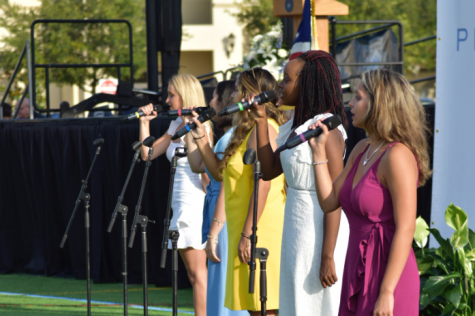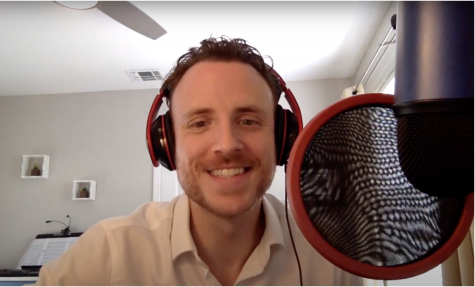After Notre Dame
Upper Division students and faculty reflect on the fire at beloved Notre Dame.

On April 15, 2019, France and all of the world witnessed destruction to an iconic cultural landmark. Millions watched online as flames left Notre Dame severely damaged, while about four-hundred firefighters raced in rush hour traffic to save what was left. Notre Dame is 856 years old. It contains many relics, including a relic of the crown of thorns that is believed to have been worn by Christ. Notre Dame is a symbol of France’s rich history and one that represents the freedom and values of the country. Around the world, Notre Dame is known as a beloved historical landmark, an icon for the Catholic faith and an art mecca. This devastating event affected so many different kinds of people from all cultural, historical, religious and artistic perspectives. In order to fully understand these perspectives, The Fanfare interviewed members of the Berkeley community to see how they were impacted.
Chaplain Brandon Peete
When did you first find out about what happened?
I read the news on my NPR app. My immediate reaction was concern, not just for the damage to the sacred structure, but also wondering whether or not the fire was started with intention, given the late attacks on religious communities around the world. Thankfully, the latest reports indicate no signs of arson seem to be present.
What should people take away from this devastating event?
Given the structure is over 850 years old, the biggest takeaway would be to cherish what you hold to be dear. If Notre Dame, a holy space that has stood for such a long time, isn’t immune to the hazards of life, then we should all remember to embrace moments and people that are sacred to us.
Antoine van Veen ’21
It was about ten minutes into what was happening, and I had a flash news alert on my laptop. It was a couple of minutes into E block, right after lunch. I started freaking out and I told everyone in my class. Maybe twenty minutes later as it was getting worse, I pulled it up on a live stream, and I ended up watching it for about two hours. I was shocked and devastated. I thought the whole thing was going to burn down. The firefighters did not come for about an hour because it was really hard to get there because of the rush hour. I was scared that if they did not come that they would not be able to save it. They did come but it took a very long time. I went to all the French teachers, and we were all devastated.
What are some of your experiences living in France and visiting Notre Dame?
I visited Notre Dame in sixth grade on a school trip. We went all the way to the top, and it was such a nice building. Just living in France, it is such an icon with the movies and everything. It is a mythical building. There was so much French history that has happened there; Napoleon crowned himself emperor there. Joan of Arc was there. There is so much history and just to see that burn breaks the heart of all people from France.
It’s different for America because America is a younger country, and we do not have as many old buildings. Notre Dame has been there for so long and has been there for wars, riots and revolutions. It has been there and survived. People are asking why now? Especially since it was Holy Week too. It burnt down on the second day. My mom’s friend was there an hour before it burnt. As she was leaving, she saw smoke and did not know it was burning. She went to the last mass they ever did since the burning. I was thankful she wasn’t there during the fire.
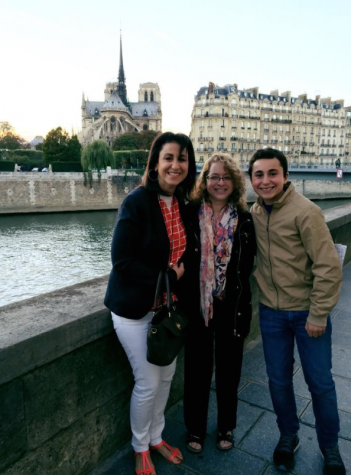
Sarah Laurent, World Languages Department
I was scared and devastated. It was very painful to watch live. With everything happening in the world, I thought it was a terrorist attack at first. I just saw the fire, and I wasn’t quite sure what had happened yet. I was at Berkeley when my students, and I found out. After listening to the news, as sad as I was, I felt relieved that no death had been reported. I am glad all of the tourists and Parisians were safe. After class I checked my phone and I had received messages from friends all around the world, some who had been there, other who have always dreamed of going there. I also received many pictures of friends and family standing in front of Notre Dame. It was very emotional. I think it was painful for many around the world. It is very unfortunate but those things happen around the world on a daily basis. We should be spreading love and support to all in times of despair.

Terrie Forester, Visual and Performing Arts Department
Have you ever visited Notre Dame and what is your connection to the building?
I do remember visiting Notre Dame Cathedral when I was in Paris on a Berkeley exchange. Ironically, it was Palm Sunday. I slipped in the back of the packed cathedral and observed some of the service. It was magical. The eight hundred-year-old stained glass windows towered above the congregation and lit the high walls in speckled rainbows of color; music from the choir filled the air.
Early in my teaching career I taught art history and the cathedral was one of my favorite structures to discuss, so the first time I walked through those giant oak doors, I felt connected to Paris. Whether you are a religious person or not, while walking the long aisles to the nave, there is a feeling of reverence and that there must be a faith so strong that people should build what seems beyond the capabilities of the age. Notre Dame ranks among the world’s most iconic cultural symbols [like] the Pyramids of Egypt, the great wall of China, etc., each ‘belonging’ to its culture. But the world shares in them a collective awe, and the thought of any threat to their existence brings us together to preserve not only the structures themselves, but also to respect the history and growing pains of the human race itself. I think that is why so many people around the world are wanting to help rebuild what was lost, whether they have actually visited the cathedral or not.
Ryan McLaughlin, Math Department
My initial reaction was just to feel overwhelmingly sad and scared that my kids might not get to see Notre Dame. They are very little and we haven’t traveled a lot with them yet. Notre Dame is easily one of my favorite places that I’ve ever been to. I went in the summer of 2010 with my wife, and it was absolutely spectacular. I don’t share the religion of the place, but it is such an overwhelmingly beautiful place.
I think that humanity has this natural impulse to try and create beautiful things. You see that going back to the Neanderthal with their cave paintings. There is that natural human impulse to want to contribute to the beauty of the world. There are a handful of times in human history where we have actually achieved that, where we actually contributed to the beauty of the natural world that wasn’t there before. Notre Dame is just one of those times where you read the history of it and it’s absolutely incredible it took over one hundred years to build. To think that these people, knowing this building wouldn’t be finished in their life, would still want to be a part of this incredible accomplishment and piece of human culture is incredibly inspiring.
What is your opinion on the reaction from the media and what do you think people should take away from this tragedy?
One thing I’ve been disappointed in is I’ve seen a lot of people’s reactions being “Well it’s too bad it happened but we shouldn’t contribute money to restoring it. There are so many horrible things going on in the world, refugee crises and poverty. Why are we not giving the money [to those causes]?” We should give money towards alleviating people’s suffering but I don’t think it has to be an either or sort of thing. I think we need to preserve this building that really belongs to humanity. It’s not just a French thing and it’s not just a Catholic thing. It belongs to everybody. It’s worth preserving our art and preserving our culture. It does not have to be an either or thing.
Anything else you would like to add?
I would just say that it definitely hammered home for me that you can’t take things for granted. You can’t just say “Oh I’ll go see that” or “Oh I’ll go do that”. We are not guaranteed that these incredible pieces of culture in human history will always be around. Travel while you are young. Go see these things while you are young. You just don’t know. Sure it’s been there for eight hundred years but you are not guaranteed it’s gonna be there five years from now. Take every opportunity to see these incredible things. Don’t wait.
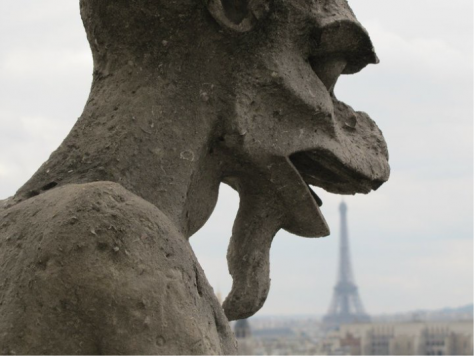
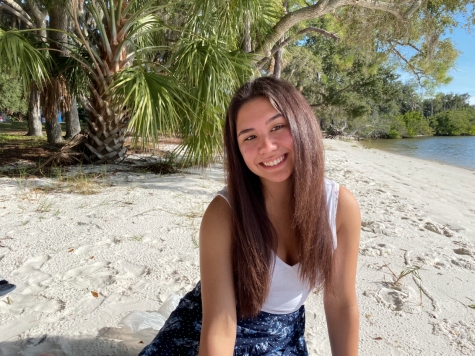
Catherine is a senior who has attended Berkeley since fourth grade. She is a member of SARC, Phoenix, Environmental club and Writing Tutor Leadership team....



